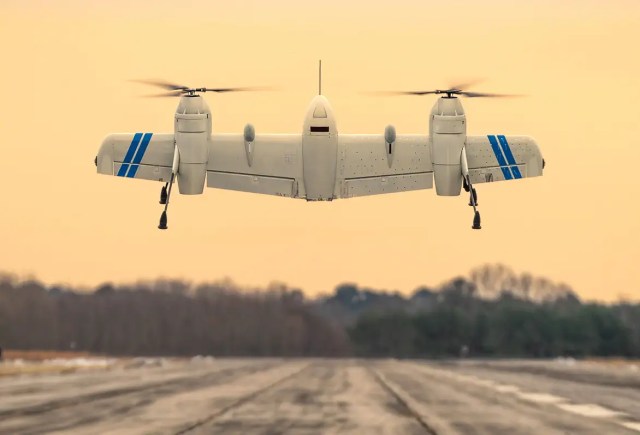Sikorsky Achieves Milestone with Rotor Blown Wing UAS
Sikorsky, a subsidiary of Lockheed Martin, has accomplished a significant feat by successfully testing a rotor blown wing uncrewed aerial system (UAS) capable of flying in both helicopter and airplane modes. Weighing 115 pounds (52 kg), this innovative prototype is powered by batteries and has shown remarkable operational stability and maneuverability across various flight conditions. Moreover, it holds the potential for future scalability into larger designs that may incorporate hybrid-electric propulsion.
Rich Benton, Sikorsky’s Vice President and General Manager, stated, “The integration of helicopter and airplane flight capabilities into a flying wing design showcases our commitment to pioneering next-generation VTOL (Vertical Take-Off and Landing) UAS that can outperform conventional helicopters in speed and range.” He emphasized that this rotor blown wing platform exemplifies how Sikorsky is utilizing its extensive 102-year aviation legacy to craft new designs that align with the evolving needs of both commercial and military sectors.
Innovation Breakthrough in Flight Testing
The rotor blown wing project, led by Sikorsky Innovations, the company’s rapid prototyping division, has progressed rapidly in just over a year. The team has navigated through preliminary design, simulations, and both tethered and untethered flight phases to collect essential aerodynamic, flight control, and quality data.
A major breakthrough occurred in January 2025 with the aircraft featuring a 10.3-foot composite wingspan, achieving over 40 successful take-offs and landings. Impressively, it conducted 30 transitions between helicopter and airplane modes, tackling the most demanding maneuver of the project. During horizontal flight, the aircraft reached a maximum cruising speed of 86 knots, and simultaneous wind tunnel tests using a full-scale model reinforced the effectiveness of the newly formulated control laws through real-world data validation.
Igor Cherepinsky, Director of Sikorsky Innovations, remarked, “Our rotor blown wing has proved the control capabilities and unique handling properties necessary for seamless transitions between hovering and high-speed wing-borne cruising. The data suggests that we can operate from pitching ship decks and unprepared landing zones, especially when adapted to larger sizes.”
Future Applications of the Rotor Blown Wing UAS
Future implementations of the rotor blown wing aircraft span a variety of essential missions, including search and rescue operations, firefighting surveillance, humanitarian assistance, and pipeline monitoring. Larger models are expected to facilitate long-range intelligence, surveillance, reconnaissance as well as piloted drone teaming (crewed/uncrewed collaborations).
All variants of the rotor blown wing will feature Sikorsky’s MATRIX™ flight autonomy system, enabling enhanced navigation and operational capabilities during flight. Additionally, this design is part of a forthcoming series of systems in development by Sikorsky, which will expand to include winged VTOL UAS and single main rotor aircraft.
Currently, Sikorsky is also developing a 1.2 megawatt hybrid-electric demonstrator configured with a tilt wing and designed to transport passengers or cargo over extended distances. A ground test of the HEX power system is anticipated to showcase its hovering ability by 2027.
To find out more about Sikorsky Innovations, visit this page.
About Lockheed Martin
Lockheed Martin is a leading global defense technology company focused on driving innovation and advancing scientific exploration. With a commitment to all-domain mission solutions and the vision of 21st Century Security®, Lockheed Martin swiftly delivers transformative technologies to maintain an advantage for those they serve.













